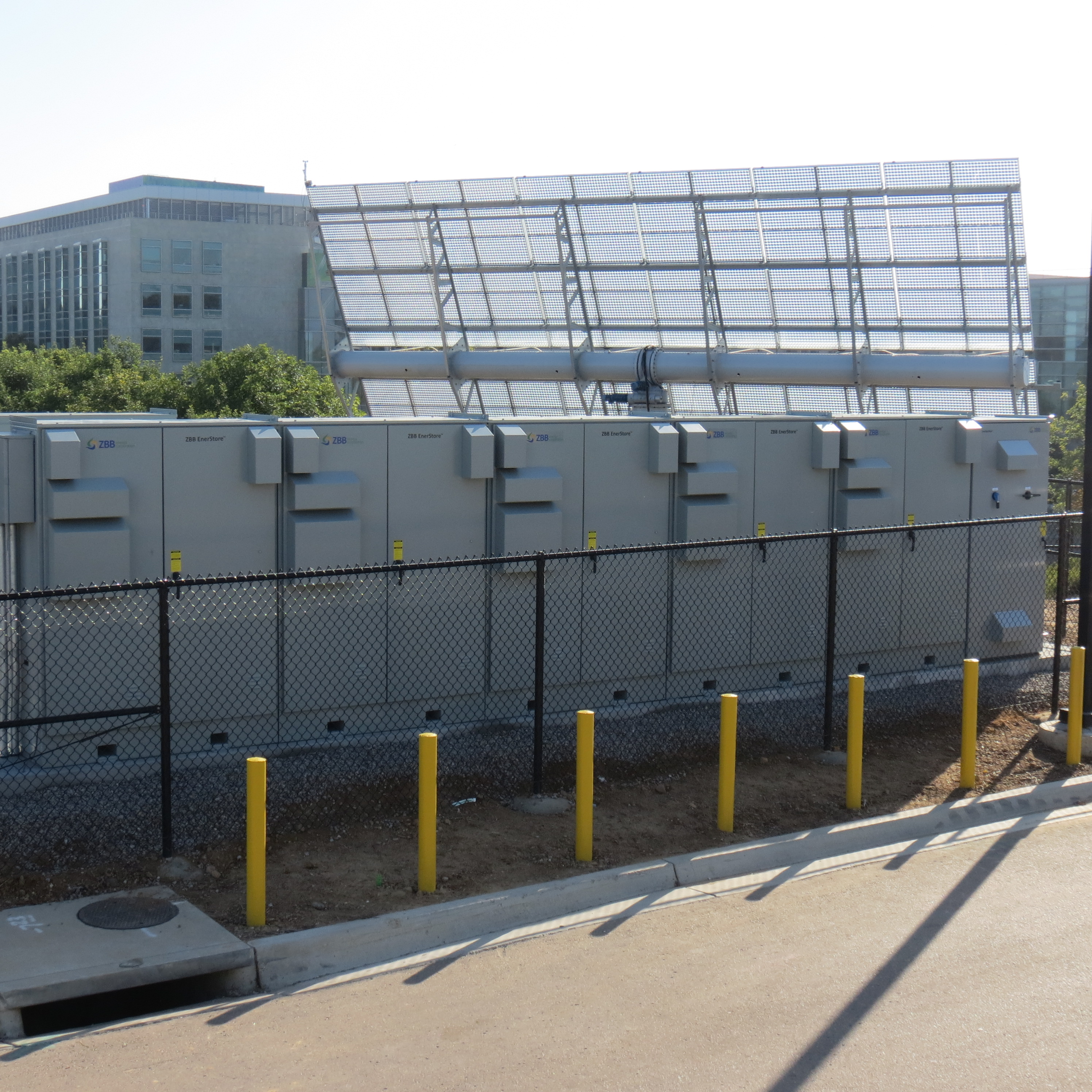The Battle for Batteries
Will centralized or distributed locations win?
 Advanced energy storage has a number of useful applications and can be placed effectively throughout the grid. Storage can support renewable integration at the bulk scale, on the distribution grid, and behind the meter. It can be operated by generators, distribution utilities, customers, or third parties. However, more complex questions arise beyond the simple one of what storage can and should do; Where will it be placed? Who will own it? And will centralized installations win over decentralized?
Advanced energy storage has a number of useful applications and can be placed effectively throughout the grid. Storage can support renewable integration at the bulk scale, on the distribution grid, and behind the meter. It can be operated by generators, distribution utilities, customers, or third parties. However, more complex questions arise beyond the simple one of what storage can and should do; Where will it be placed? Who will own it? And will centralized installations win over decentralized?
How did we get here?
Historically, larger scale merchant operators have been the most active in deploying storage, such as with storage investments for ancillary service provision in the wholesale market. Today, the number and the types of investors and applications are growing. We have seen renewable developers coupling devices with large wind and solar for renewable integration, and merchant operation. Utilities are also using storage for reliability and resiliency, and now many end-users want solar-plus-storage systems, storage for bill management, or short-term backup. In their primary roles, behind-the-meter, utility, and merchant-owned systems would not seem to compete. However, as customer and grid operations blend, most notably, under “grid modernization” efforts, applications begin to affect one another. For example, certain use cases for solar-plus-storage systems could limit a growing need for ancillary services to integrate renewables.
So why is location only coming up as a topic for consideration now? Part of the reason is that storage applications have evolved over different timelines. For example, when advanced energy storage entered the wholesale market for ancillary services, market operators and industry thought leaders saw their fast response capabilities as an advantage. In addition, as drivers for clean air and clean energy technologies started increasing adoption of large-scale renewables, storage emerged as something that could help manage large amounts of variable generation. As storage began to drop in price, solar PV developers began to pair the storage devices with their solar systems for commercial and end-use applications.
These initiatives, significant today, are beginning to push storage from the large-scale to the edge of the grid. For these applications, the business case is simple. Storage can optimize the solar asset and potentially provide backup, and additional revenue opportunities for the user. Finally, as utilities and their regulators begin to understand the reliability and resiliency benefits that advanced storage technologies offer, they are placing storage on distribution systems to strengthen grid reliability, and defer capital expenditures. Today, storage, initially thought able to be placed “anywhere,” is now appearing to have primary applications “everywhere.”
What is at stake today?
The question of where to locate storage is not simply about engineering. It has both technical and economic implications. Whoever owns the storage and operates the asset can influence who reaps the revenue from it.
Some interesting configurations are emerging. Developers on the customer side of the meter are forming plans to aggregate devices to perform multiple services, even creating business plans for entities such as YieldCos to leverage the capabilities and revenue generating potential of storage. At the same time, customers may benefit from improved reliability, energy bill management, or a share of the value stream generated from load shifting.
Storage holds huge potential as a reliability asset, too. Studies by Texas utility, Oncor, noted the potential to add billions of dollars of storage to improve reliability on the Texas grid. Energy storage activities in New York are likely to increase due to the Reforming the Energy Vision (REV) process, which created an exception for utility-owned storage, in cases where the devices are used to improve resiliency and reliability on the grid.
Finally, the initial deployers of storage for ancillary services and renewable integration are noting that larger, more centralized systems may still be the better approach to leveraging the capabilities of storage to operate the grid more efficiently and effectively.
Battle or cooperation?
On the surface, it may appear that each of the stakeholder groups is looking to launch its own battle for the location and ownership of storage. Certainly, solar developers and companies are going to aggressively try to deploy packaged storage technologies. And utilities, noting the value of storage assets, will most likely investigate operating or investing in storage as well. Merchant operators, too, will look at leveraging their assets to capture potential revenue from their storage systems.
However, the drivers toward cooperative rather than combative roles are even greater. Issues such as storage safety, controls, or even navigating regulations and policies which are required for devices to participate in revenue roles (either upstream or downstream from the device’s location) are all powerful factors. In the end, a combination of market forces -- including new policies to accompany modernization plans, new communication and control protocols that will need to be created, and the sheer amount of the money that is on the table -- will drive stakeholders away from the battles of the past, and toward a more collaborative approach to connecting the devices across the grid.

Jessica Harrison is the head of section for energy strategy, markets, and policy development at DNV GL.
DNV GL | www.dnvgl.com
Volume: September/October 2015









